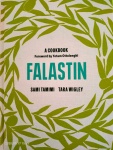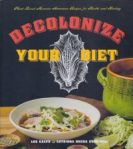
A few weeks ago I was intent on writing about Queen of Puddings. I got waylaid, instead writing about the posthumously published 1669 book The Closet of the Eminently Learned Sir Kenelme Digbie Kt. Opened. That book was such good fun that I forgot entirely about the Queen of Puddings. So today I am determined to remedy that. But first I have to tell you about Quaking Pudding (I saw that eye roll). I just like the name and it is six entries prior to Queen’s Pudding (or queen of puddings) in Alan Davison’s wonderful book Food, so I know you won’t mind just this tiny diversion.

Quaking Pudding is light, delicate and halfway to being an egg custard. For us, what is important is that, like Queen of Puddings, breadcrumbs figure large and, unlike Queen of Pudding, but especially important, is that it is one of the oldest puddings to be made in a cloth. Davison writes that,
“a recipe for it was recorded in the early 17th century and it also appears in Samuel Pepys’s diary; he recalls having eaten a particularly good ‘shaking pudding’. This pudding is often served with a sweet white wine sauce”.
But to return to the 17th century, Sir Kenelme Digbie, and the first mention of a dish which sounds like and makes like Queen of Puddings: breadcrumbs, milk and egg yolks, part baked, topped with jam and meringue and then baked till done. Breadcrumbs and milk were not an uncommon ‘dish’ and there are a variety of puddings made using breadcrumbs and milk, for example, in 1833, the usually grumpy, Thomas Carlyle wrote that,
“On fine evenings I was wont to carry forth my supper (breadcrumbs boiled in milk) and eat it out-of-doors…many a sunset have I, looking at the distant western mountains, consumed, not without relish, my evening meal.”
Such puddings were named after their place of origin. Thus for Monmouth Pudding milk-soaked bread is elevated with whisked egg whites and baked in layers with perhaps raspberry jam or fruit. Monmouth Pudding can be traced back to the 17th century and was a dish using the leftover foods of breadcrumbs and milk and eaten by the poor. (Source: Pipstips)
The later 19th century Manchester pudding is said to be based on that Monmouth Pudding. Certainly it is similar, but contains the considerably more expensive egg yolks and brandy, as well as a pastry base. It also lacks the egg white meringue topping. Manchester Pudding appears in one of the 24 monthly parts of The Book of Household Management, published between 1859 and 1861. This is, of course, written by our old friend Mrs Isabella Beeton. In her book, Manchester pudding was eaten cold and was recipe 1300 in her list of recipes. I quite liked the Canary Pudding (containing the weight of 3 eggs in sugar and butter) at 1258, the 1273 recipe for Empress Pudding using lots of expensive rice and following Manchester Pudding, at 1301, the newly fashionable Sweet Macaroni Pudding which was so new it deserved its own illustration and an extended description of how macaroni is produced.
How the 19th century Manchester Pudding became the 20th century Queen’s Pudding, losing the pastry base and gaining the meringue on top, is a bit of a mystery but Davidson says that Queen of Puddings was probably renamed by the chef when Queen Victoria, on a royal visit to Manchester, admired his local pudding.
There are lots of recipes for Queen of Puddings. It seems almost de rigeur for a modern chef to have their own version. And so you will find one from Delia, Jamie, Nigella, Mary Berry, and Anna Jones’s mum. Even though it is a thoroughly British pudding, versions can be found from the US cook, Martha Stewart, Australia’s Donna Hay and Allyson Gofton from NZ amongst others. If you would like a vegan version, look here.
I would have liked to give you the recipe from my old school recipe book, but it, along with my other 300 cookery books are in storage and the 29 books that remain with me do not contain even one recipe for this easiest of puddings. So, here instead, from the archives of RNZ, is Julie Buiso’s 2010 recipe for Queen of Puddings (3:10 pm on 20 August 2010)

Weekly Recipe













